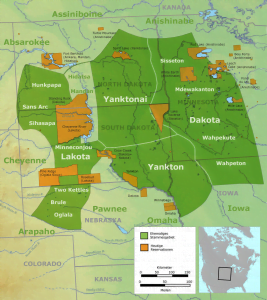Winnebago
Linguistically the Winnebago Indians are closely related to the ŧΩiwe’re on the one side and to the Mandan on the other. They were first mentioned in the Jesuit Relation of 1636, though the earliest known use of the name Winnebago occurs in the Relation of 1640; Nicollet found them on Green bay in 1639. According to Shea, the Winnebago were almost annihilated by the Illinois (Algonquian) tribe in early days, and the historical group was made up of the survivors of the early battles. Chauvignerie placed the Winnebago on Lake Superior in 1736, and Jefferys referred to them and the … Read more

